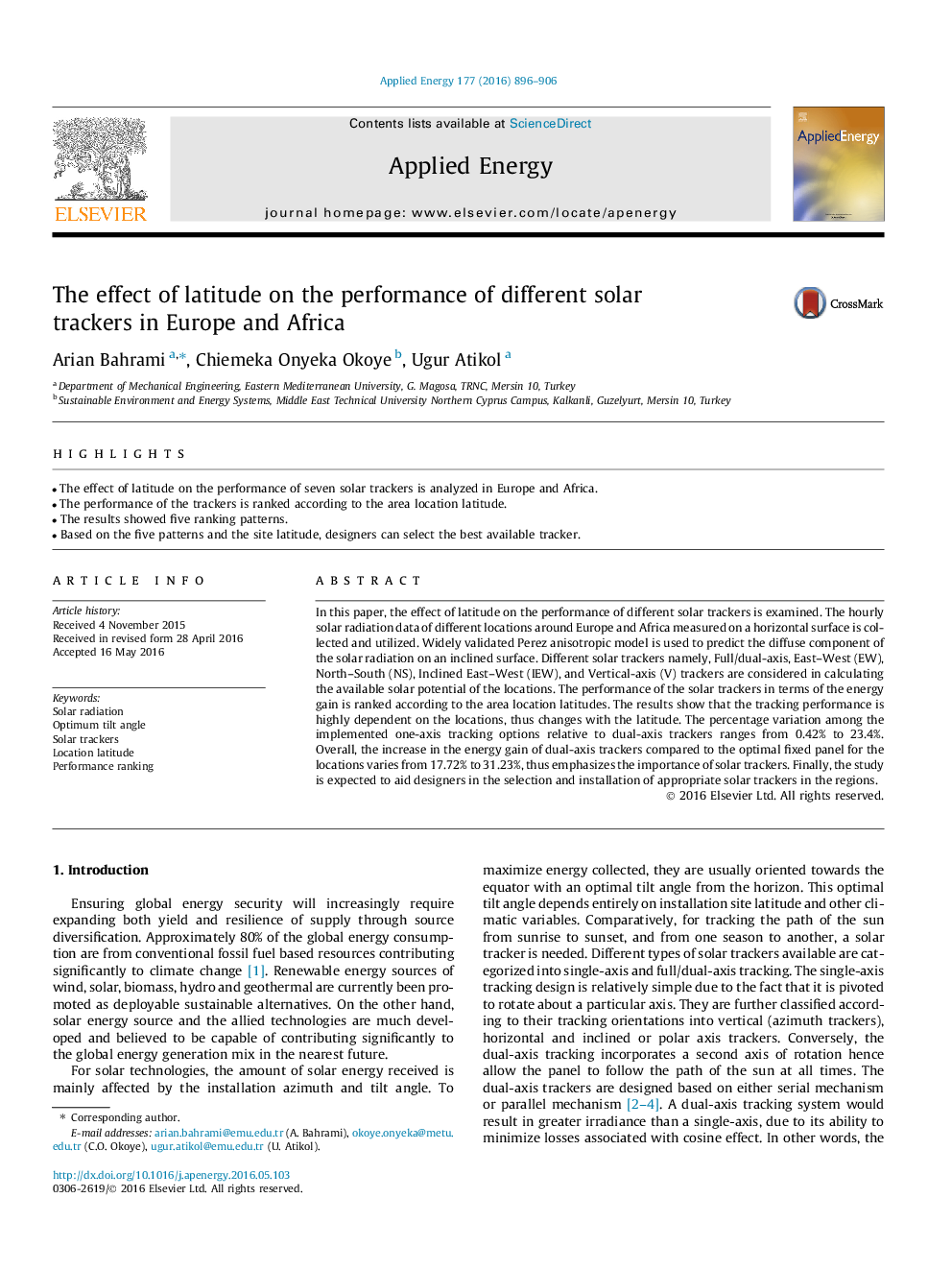| Article ID | Journal | Published Year | Pages | File Type |
|---|---|---|---|---|
| 6682850 | Applied Energy | 2016 | 11 Pages |
Abstract
In this paper, the effect of latitude on the performance of different solar trackers is examined. The hourly solar radiation data of different locations around Europe and Africa measured on a horizontal surface is collected and utilized. Widely validated Perez anisotropic model is used to predict the diffuse component of the solar radiation on an inclined surface. Different solar trackers namely, Full/dual-axis, East-West (EW), North-South (NS), Inclined East-West (IEW), and Vertical-axis (V) trackers are considered in calculating the available solar potential of the locations. The performance of the solar trackers in terms of the energy gain is ranked according to the area location latitudes. The results show that the tracking performance is highly dependent on the locations, thus changes with the latitude. The percentage variation among the implemented one-axis tracking options relative to dual-axis trackers ranges from 0.42% to 23.4%. Overall, the increase in the energy gain of dual-axis trackers compared to the optimal fixed panel for the locations varies from 17.72% to 31.23%, thus emphasizes the importance of solar trackers. Finally, the study is expected to aid designers in the selection and installation of appropriate solar trackers in the regions.
Related Topics
Physical Sciences and Engineering
Energy
Energy Engineering and Power Technology
Authors
Arian Bahrami, Chiemeka Onyeka Okoye, Ugur Atikol,
